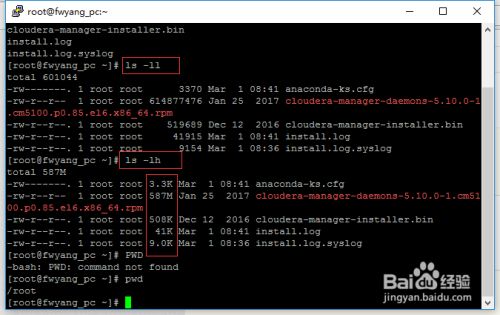1,安装SSH
复制代码代码示例:
yum install ssh
2,启动SSH
复制代码代码示例:
service sshd start
3,设置开机运行
复制代码代码示例:
chkconfig sshd on
一,SSH相关配置文件的修改
首先,修改SSH的配置文件。
复制代码代码示例:
[root@jbxue ~]# vi /etc/ssh/sshd_config ← 用vi打开SSH的配置文件
#Protocol 2,1 ← 找到此行将行头“#”删除,再将行末的“,1”删除,只允许SSH2方式的连接
↓
Protocol 2 ← 修改后变为此状态,仅使用SSH2
#ServerKeyBits 768 ← 找到这一行,将行首的“#”去掉,并将768改为1024
↓
ServerKeyBits 1024 ← 修改后变为此状态,将ServerKey强度改为1024比特
#PermitRootLogin yes ← 找到这一行,将行首的“#”去掉,并将yes改为no
↓
PermitRootLogin no ← 修改后变为此状态,不允许用root进行登录
#PasswordAuthentication yes ← 找到这一行,将yes改为no
↓
PasswordAuthentication no ← 修改后变为此状态,不允许密码方式的登录
#PermitEmptyPasswords no ← 找到此行将行头的“#”删除,不允许空密码登录
↓
PermitEmptyPasswords no ← 修改后变为此状态,禁止空密码进行登录
然后保存并退出。(vi保存退出的命令为ZZ)
因为只想让SSH服务为管理系统提供方便,所以在不通过外网远程管理系统的情况下,只允许内网客户端通过SSH登录到服务器,以最大限度减少不安全因素。
设置方法如下:
复制代码代码示例:
[root@jbxue ~]# vi /etc/hosts.deny ← 修改屏蔽规则,在文尾添加相应行
# hosts.deny This file describes the names of the hosts which are
# *not* allowed to use the local INET services,as decided
# by the ‘/usr/sbin/tcpd’ server.
#
# The portmap line is redundant,but it is left to remind you that
# the new secure portmap uses hosts.deny and hosts.allow. In particular
# you should know that NFS uses portmap!
sshd: ALL ← 添加这一行,屏蔽来自所有的SSH连接请求
[root@jbxue ~]# vi /etc/hosts.allow ← 修改允许规则,在文尾添加相应行
#
# hosts.allow This file describes the names of the hosts which are
# allowed to use the local INET services,as decided
# by the ‘/usr/sbin/tcpd’ server.
#
sshd: 192.168.0. ← 添加这一行,只允许来自内网的SSH连接请求
二,重启动SSH启动
修改完SSH的配置文件后,需要重新启动SSH服务才能使新的设置生效。
复制代码代码示例:
[root@jbxue ~]# /etc/rc.d/init.d/sshd restart ← 重新启动SSH服务器
Stopping sshd: [ OK ]
Starting sshd: [ OK ] ← SSH服务器重新启动成功
这时,在远程终端(自用PC等等)上,用SSH客户端软件以正常的密码的方式是无法登录服务器的。为了在客户能够登录到服务器,我们接下来建立SSH用的公钥与私钥,以用于客户端以“钥匙”的方式登录SSH服务器。
三,SSH2的公钥与私钥的建立
登录为一个一般用户,基于这个用户建立公钥与私钥。(这里以centospub用户为例)
复制代码代码示例:
[root@jbxue ~]# su – centospub ← 登录为一般用户centospub
[centospub@jbxue ~]$ ssh-keygen -t rsa ← 建立公钥与私钥
Generating public/private rsa key pair.
Enter file in which to save the key (/home/kaz/.ssh/id_rsa): ← 钥匙的文件名,这里保持默认直接回车
Created directory ‘/home/kaz/.ssh’
Enter passphrase (empty for no passphrase): ← 输入口令
Enter same passphrase again: ← 再次输入口令
Your identification has been saved in /home/kaz/.ssh/id_rsa.
Your public key has been saved in /home/kaz/.ssh/id_rsa.pub.
The key fingerprint is:
tf:rs:e3:7s:28:59:5s:93:fe:33:84:01:cj:65:3b:8e centospub@jbxue.centospub.com
然后确认一下公钥与密钥的建立,以及对应于客户端的一些处理。
复制代码代码示例:
[centospub@jbxue ~]$ cd ~/.ssh ← 进入用户SSH配置文件的目录
[centospub@jbxue .ssh]$ ls -l ← 列出文件
total 16
-rw——- 1 centospub centospub 951 Sep 4 19:22 id_rsa ← 确认私钥已被建立
-rw-r–r– 1 centospub centospub 241 Sep 4 19:22 id_rsa.pub ← 确认公钥已被建立
[centospub@jbxue .ssh]$ cat ~/.ssh/id_rsa.pub >> ~/.ssh/authorized_keys ← 公钥内容输出到相应文件中
[centospub@jbxue .ssh]$ rm -f ~/.ssh/id_rsa.pub ← 删除原来的公钥文件
[centospub@jbxue .ssh]$ chmod 400 ~/.ssh/authorized_keys ← 将新建立的公钥文件属性设置为400
然后,将私钥通过安全的方式转移到欲通过SSH连接到服务器的PC上。这里,以通过3.5寸磁盘为介质为例:
复制代码代码示例:
[centospub@jbxue .ssh]$ exit ← 退出一般用户的登录(返回root的登录)
[root@jbxue ~]# mount /mnt/floppy/ ← 加载软盘驱动器
[root@jbxue ~]# mv /home/centospub/.ssh/id_rsa /mnt/floppy/ ← 将刚刚建立的私钥移动到软盘
[root@jbxue ~]# umount /mnt/floppy/ ← 卸载软盘驱动器

 最简单的查看方法可以使用ls -ll、ls-lh命令进行查看,当使用...
最简单的查看方法可以使用ls -ll、ls-lh命令进行查看,当使用...